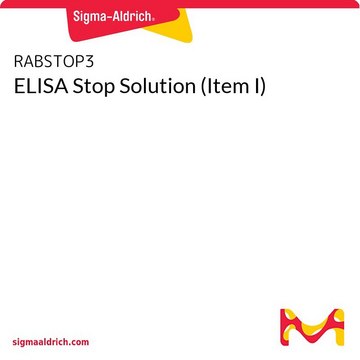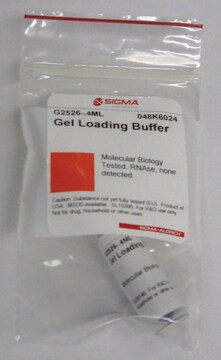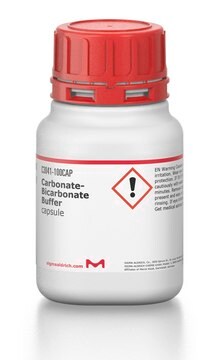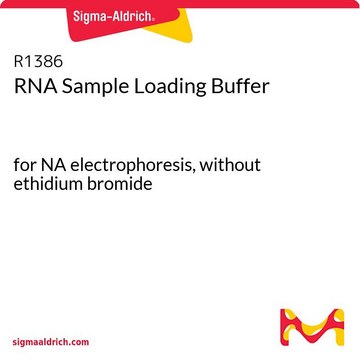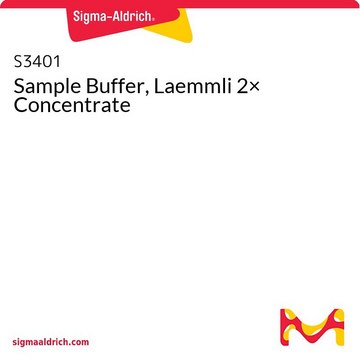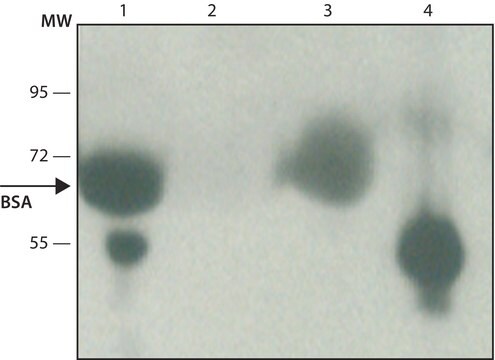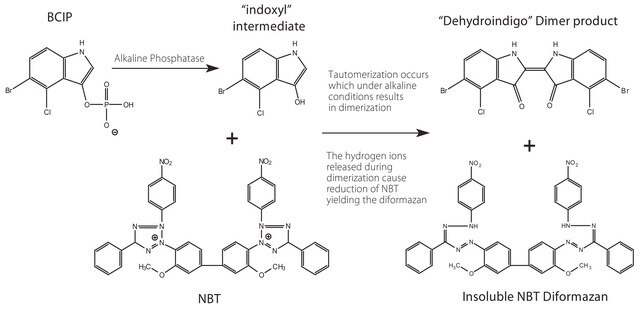S5814
Stop Reagent for TMB Substrate
chromogenic, powder
Sinonimo/i:
TMB liquid substrate system stop reagent
Autenticatiper visualizzare i prezzi riservati alla tua organizzazione & contrattuali
About This Item
Codice UNSPSC:
12352204
NACRES:
NA.83
Prodotti consigliati
Nome del prodotto
Stop Reagent for TMB Substrate, powder, ELISA, 450 nm
Livello qualitativo
Stato
powder
Temperatura di conservazione
room temp
Descrizione generale
Stop Reagent for TMB Substrate is used to stop TMB substrate reaction for ELISA and change the absorbance from blue (620 nm) to yellow (450 nm).
Applicazioni
Stop Reagent for TMB Substrate has been used:
- for in vitro preparation and analysis of neutrophil extracellular traps (NETs)
- for direct binding enzyme linked immune sorbent assay (ELISA)
- for interference assay
Avvertenze
Danger
Indicazioni di pericolo
Consigli di prudenza
Classi di pericolo
Acute Tox. 4 Dermal - Acute Tox. 4 Oral - Eye Dam. 1 - Skin Corr. 1 - Skin Sens. 1 - STOT SE 3
Organi bersaglio
Respiratory system
Codice della classe di stoccaggio
8A - Combustible corrosive hazardous materials
Classe di pericolosità dell'acqua (WGK)
WGK 3
Punto d’infiammabilità (°F)
260.6 °F - closed cup
Punto d’infiammabilità (°C)
127 °C - closed cup
Scegli una delle versioni più recenti:
Possiedi già questo prodotto?
I documenti relativi ai prodotti acquistati recentemente sono disponibili nell’Archivio dei documenti.
I clienti hanno visto anche
Development of a reliable assay to measure glypican-1 in plasma and serum reveals circulating glypican-1 as a novel prostate cancer biomarker
Levin RA, et al.
Oncotarget, 9(32), 22359-22359 (2018)
Romesh R Subramanian et al.
Nucleic acids research, 43(19), 9123-9132 (2015-10-09)
The in vivo potency of antisense oligonucleotides (ASO) has been significantly increased by reducing their length to 8-15 nucleotides and by the incorporation of high affinity RNA binders such as 2', 4'-bridged nucleic acids (also known as locked nucleic acid
Prevalence of interfering antibodies in dogs and cats evaluated using a species-independent assay
Bergman D, et al.
Veterinary Clinical Pathology / American Society For Veterinary Clinical Pathology, 47(2), 205-212 (2018)
Myeloid-specific deletion of peptidylarginine deiminase 4 (PAD4) mitigates atherosclerosis.
Liu Y, et al.
Frontiers in Immunology, 9, 1680-1680 (2018)
Fresthel Monica M Climacosa et al.
Protein and peptide letters, 27(10), 962-970 (2020-04-29)
Microbe-Binding Peptides (MBPs) are currently being investigated to address the problem of antimicrobial resistance. Strategies enhancing their antimicrobial activity have been developed, including peptide dimerization. Here, we present an alternative approach based on peptide polymerization, yielding hapten-labelled polymeric MBPs that
Il team dei nostri ricercatori vanta grande esperienza in tutte le aree della ricerca quali Life Science, scienza dei materiali, sintesi chimica, cromatografia, discipline analitiche, ecc..
Contatta l'Assistenza Tecnica.

